Socialization + Interaction
Topic overview
the idea of “nature vs. nurture”
socialization and the “self”
Goffman: self and interaction as performance
Mead: stages of social development
Readings
Required: Brym, Chapter 3: Socialization
AND
Brym, Chapter 8, p. 171-172(Gender Socialization)
Optional: Brym, Chapter 9
Socialization + Social Interaction
How does culture function as a social force?
Must be internalized by social actors in order to influence behaviour
Socialization is one process through which culture becomes internalized by individuals
Socialization: The process by which people learn their culture. They do so by (1) entering into and disengaging from a succession of roles and (2) becoming aware of themselves as they interact with others
Socialization

Winthrop Kellogg, his baby son Donald, and Donald’s “sister” Gua
treated the chimpanzee as his daughter, member of the family
if raising the chimpanzee what is going to be the affect of exposing her to human environment
chimpanzee was sent away → because the son was acting like a chimpanzee, began to talk, act like one
Nature vs. Nurture
How do individuals come to be the kinds of people that they are? Nature - biology, Nurture - environment
Biological determinism ( “nature” limit position)
Genetics and the biological systems they produce imbue individuals with particular qualities: temperament, intelligence, behavioural traits, etc.
Empiricism (“nurture” limit position) difference between individuals is because of their own experiences
People’s experience is what accounts for the way that they develop
“Let us suppose the mind to be, as we say, a tabula rasa, void of all characters, without any ideas. How comes it to be furnished? Whence comes it by that vast store, which the busy and boundless fancy of man has painted on it, with an almost endless variety? When has it all the materials of reason and knowledge? To this I answer, in one word, from experience.” – John Locke five children to raise and by virtue i will create a genius, a criminal, a artist… etc
Problems with testing nature vs. nurture empirically
The quote from Locke on the previous page was written in 1689
Why does the question of nature vs. nurture continue to confound social scientists?
Issues with testing nature vs. nurture empirically
Nature vs. nurture cannot be tested experimentally
Nature and nurture are confounded in the social world
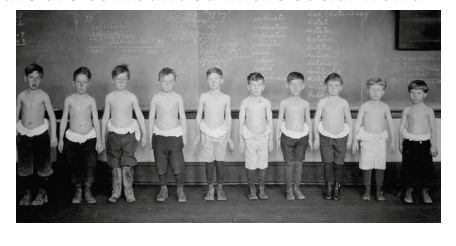
ex. taking care of a plant for reading week, give plant food A however friend suggests to get plant food B. gave both plant food to your plant but you aren’t sure which one was the effective one for the plant
→ when two things co-occur, we can’t determine which one caused whatever outcome we observedex. person (bio and socialization) where is the identity coming from bio or socialization. both are confounded
Nature vs. nurture in sociology
If we do not yet possess a satisfying answer to the question of nature vs nurture, how can we think about this question in a useful way in sociology?
Nature vs. nurture
Even if we assume, for the sake of argument, that some particular trait is “natural” or biologically based, we still need to think about how that trait is expressed under specific social conditions - ex. aggressive is a trait that has some biological bases, therefore nurture doesn’t matter. social context is going to matter for a great deal of how its meaningful
The same trait may be understood very differently depending on the social context in which it is expressed
 bar fight - crime, not evaluated positively, experience social consequences
bar fight - crime, not evaluated positively, experience social consequences
football - not understood as antisocial behaviour, “way to hassle” evaluated positively
All traits require nurture for expression even those traits that are biological based
Human beings are, by virtue of their nature, radically open to nurture - species that has a radical openness to nurture, to socialization
Even behaviours that we might be able to clearly designate as “natural” to humans (walking on two legs, speaking language), require socialization to manifest
 girl lives with dogs = acts like one
girl lives with dogs = acts like one
cruel childhood neglect (parents had too many children, infant was abandoned)
little human contact impacted her development
now, special care home, mental age of 5-6 years old, missed out on basic human skills
what she lacks, what has taken place with those traits and behaviours
strikingly successful imitation of a dog
The example of language
There is ample evidence that human beings are “pre-programmed” to learn how to comprehend language, and how to use language to think and to express thoughts
However, which language a human being learns is entirely the result of nurture (i.e. which language(s) someone is exposed to in early childhood)
Socialization
Explicit socialization
Purposeful, declarative instruction of social knowledge ex. parent know that their child aren’t “pre-programmed”, behaviours that an adult would never think they’ll be doing, close your mouth when eating, indoor voice
this is how it is, bring your behaviours to these rules
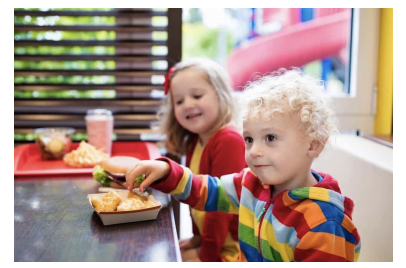 difference between the two - purposeful vs declarative
difference between the two - purposeful vs declarative
Implicit socialization
Automatic, unconscious transmission of social knowledge ex. not hearing this is the rule, child or whoever might be is automatically absorbing the behaviour (girl dog video)
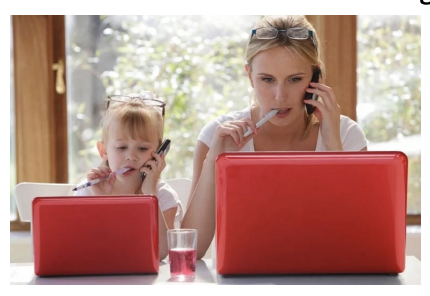
Primary socialization
The process of acquiring the basic skills needed to function in society during childhood, usually in the context of the family - site of primary socialization (family or orphanage)
Language
Basic rules of social interaction
Limits of acceptable behaviour
Ex. “don’t hit” “share” “be nice” - need socialization to prevent unacceptable behaviour
Sense of self
Child absorbs the system of categories that are socially meaningful in their society
Identification with categorical membership
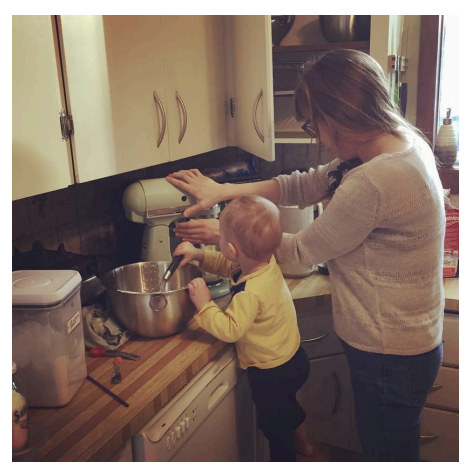
Implicit socialization in childhood:
Martin (2000) “What do animals do all day?: The division of labor, class bodies, and totemic thinking in the popular imagination”
Socioeconomic class - income, prestige, workplace autonomy
Food service worker
lawyer
plumber
Construction worker
hairdresser
teacher
Doctor
Retail employee
airplane pilot
nanny
Politician
baker
software developer
Custodian
firefighter
UBER driver
food service + retail - customer service, public facing, entry level (unskilled), low income
lawyer + doctor - educational requirements, prestige, highly paid
plumber + construction worker - manual labour, trades
“What do animals do all day?”
Content analysis of Richard Scarry’s “What do people do all day?”
Best-selling children’s author of all time
Research question: How do children learn about the division of labour in society?
Martin: class-linked categories are introduced in pre-school literature
Research method: quantitative content analysis
What animals perform what jobs? Is species linked to what job an animal performs?
5 variable data set
Case = individual character
Variables = species, job, relationship to authority, sector, skill level
Clump categories together based on likeness
Results:
animal species and job are related variables
information about species → categories of employment that mirror the DoL in contemporary society
boundaries are not absolute
Conclusion: children’s literature teaches children that there are different categories of people in society, and that those categories correspond to different roles in the paid labour force
Not intended by the author
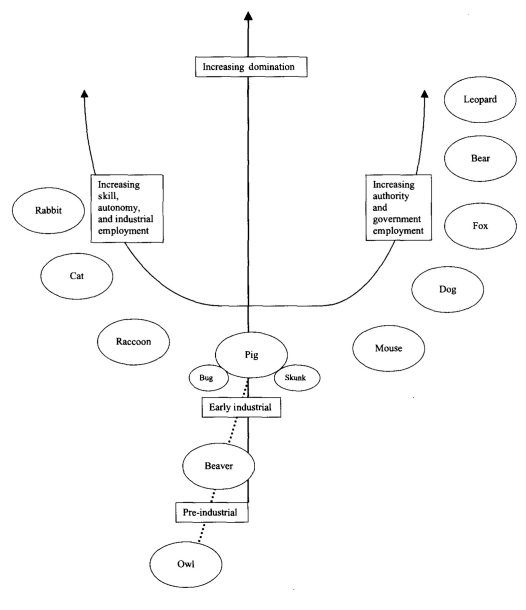
Sources of socialization
The most important source of socialization in early childhood is face to-face interaction with other people
Other sources of socialization
Children’s literature - martin’s book
Mass media
Social media
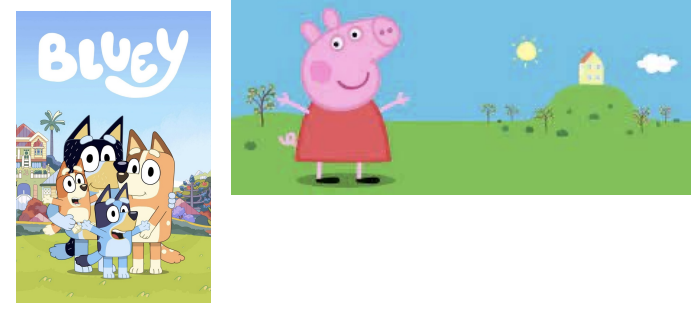 children absorb the mode of speaking (peppa pig, british accent)
children absorb the mode of speaking (peppa pig, british accent)
Gender socialization
The process of learning and internalizing gender differentiation
Gender socialization begins in the first minutes of life
Adults tend to talk more to female babies
Adults tend to handle male infants more roughly, and are more gentle with female infants
based on their gender there is a difference at the level of socialization, different experiences
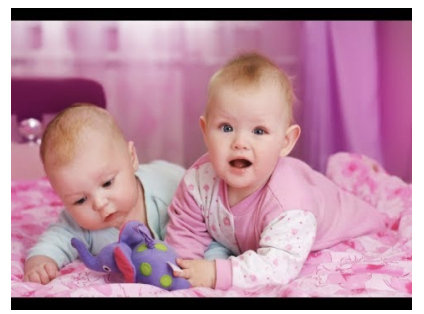
Gender socialization: toddlerhood
Gender socialization continues into toddlerhood. Both the toys that children play with as toddlers, and the activities they are enrolled in by parents, are differentiated by gender
 - level at the pattern by the group, girls end up playing with toys that are understood as ‘girls’ toys and boys end up playing with toys that are understood as ‘boys’ toys
- level at the pattern by the group, girls end up playing with toys that are understood as ‘girls’ toys and boys end up playing with toys that are understood as ‘boys’ toys
girls are responsible with speech acts, communication than boys
box of lego is not encouraging verbal reasoning, spacial (their environment, how to use their resources) cognition. boys tend to have an advantage in spacial cognition
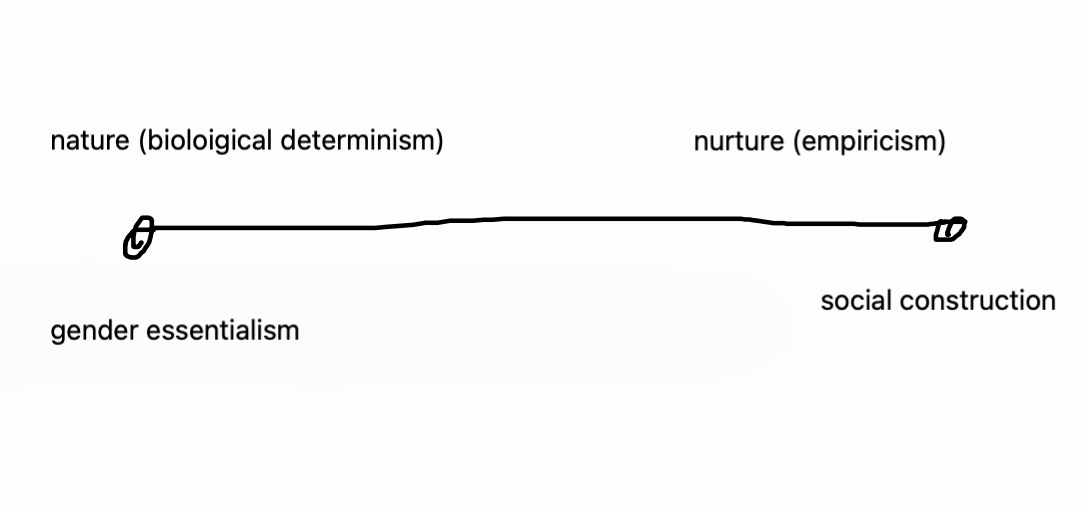
Gender socialization
“One is not born a woman, but becomes one.” - Simone de Beauvoir
Nature vs. nurture and the question of gender
Biological determinism → gender essentialism
Gender essentialism: the idea that differences between men and women are biologically based
Empirical evidence that supports the idea of gender essentialism is always confounded by gender socialization
→ social construction involves the production of a very real reality
Bobbi Gibb
Applied to run the Boston Marathon in 1966
Received a letter from the organizers that denied Gibb’s entrance into the race on the basis that “women are not physiologically able to run a marathon” -
Gibb was disallowed from racing because the organizers feared that they would be held liable if she collapsed or suffered some other medical complication
Number of women who have completed the Boston marathon to date: 249 932
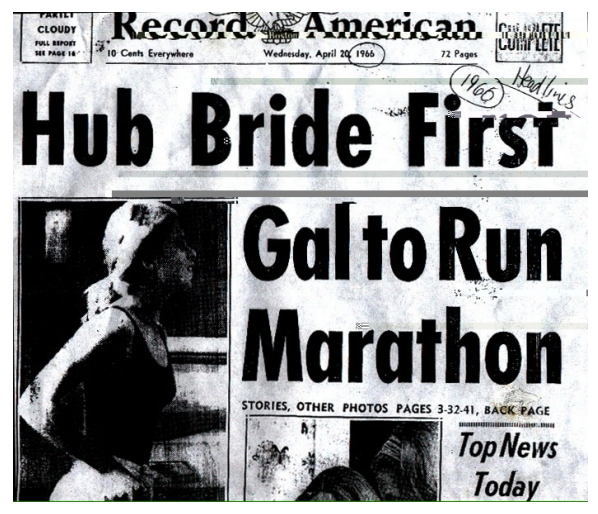
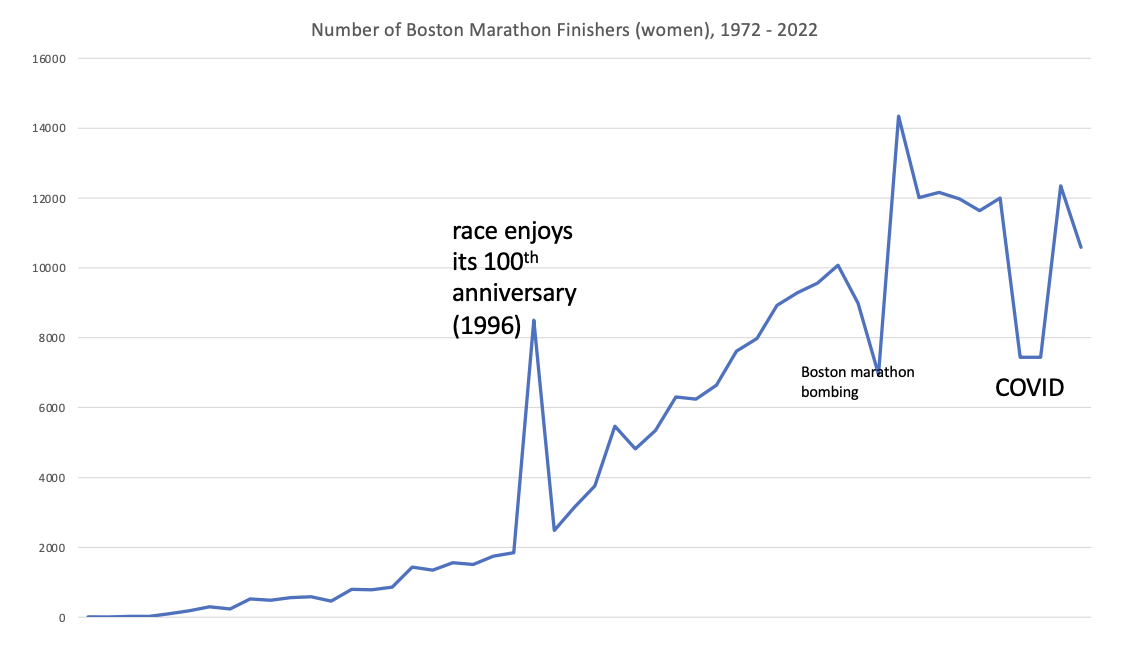
Secondary socialization
Explicit and implicit socialization that occurs outside the context of a child’s primary socialization environment (which is usually the family)
In Canadian society, the most important source of secondary socialization is the school system
Secondary socialization at school occurs via two distinct sources of social knowledge
Authority figures (teachers, librarians, coaches, support staff, etc.)
Peer groups - difference between how you talk to your friends vs professors
Peer group socialization
In addition to being socialized by the socially mature adults that care for them, children are also socialized by their peers
Peer socialization takes place in childhood and continues throughout the life course
Peers are groups of people who are similar in age and social status
Within peer groups, teenagers and young adults collectively process and engage with the social knowledge they receive from primarily socialization (and from the secondary socialization they are exposed to via authority figures)
Within the context of an affirming peer group, teenagers and young adults often feel comfortable challenging or rejecting aspects of their accumulated social knowledge
This can result in “deviance” from social norms, including dress and other aspects of presentation, behaviour, and beliefs difference between family photo vs peer group
‘rizz’ and charisma are somewhat similar however ‘rizz’ is limited to only in a ‘flirtatious’ way, for example you wouldn’t be able to say ‘that politician has rizz’
compared to other generations, this generation has accelerated with communication
Montiegel (2023). Peer socialization in an oral preschool classroom. Language and Communication, 89, 63-77.
Data collection: 25 hours of video recordings in a preschool classroom with DHH (deaf and hard of hearing) toddlers goal is to socialize deaf/hard-hearing children so that they enter in ‘regular’ classroom with children who can hear
Data was analyzed using conversation analysis
Results: Peers were an important part of the socialization process, enforcing the classroom norms that were being introduced by the teachers
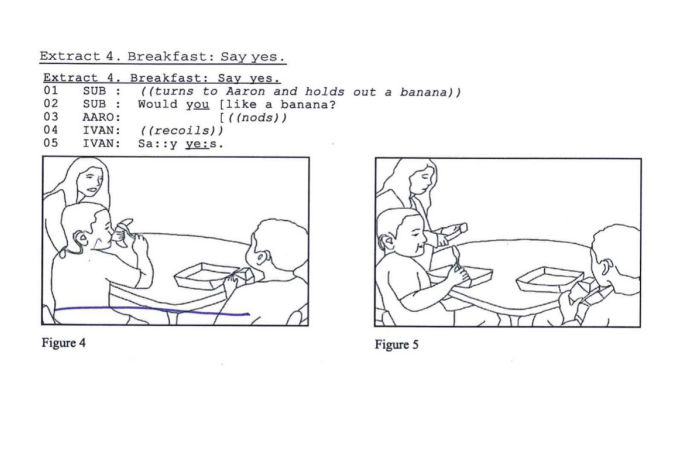 to encourage verbal communication, ivan judges aaron with his response since he aaron nodded and not use verbal communication
to encourage verbal communication, ivan judges aaron with his response since he aaron nodded and not use verbal communication
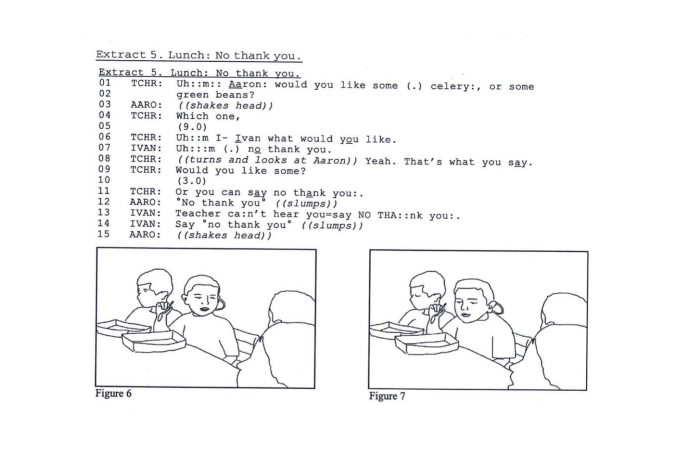 teacher uses ivan’s communication and expect aaron to be like him, to pressure him to the expectation
teacher uses ivan’s communication and expect aaron to be like him, to pressure him to the expectation
peer is more informant rather than the teacher
Social Interaction
The micro-level encounters between individuals - micro level meaning family or friends
Responsible for early socialization atom of sociology
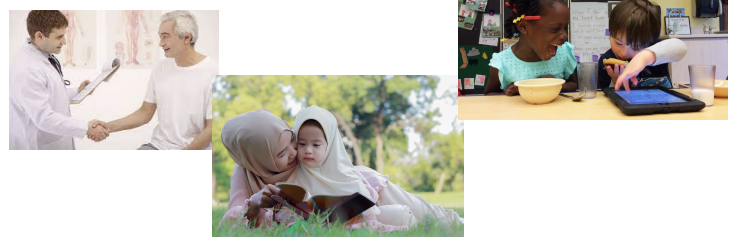
G.H. Mead: The development of the self
“The self, as that which can be an object to itself, is essentially a social structure, and it arises in social experience”
Mead describes 4 stages of social development, which culminate in the achievement of a socially mature adult with a fully developed sense of self
Stage 1: imitation
Direct copying of the other’s behaviour first communicative act, infants are able to communicate via imitation
Ex. Parent sticks out their tongue → baby sticks out their tongue
Infancy
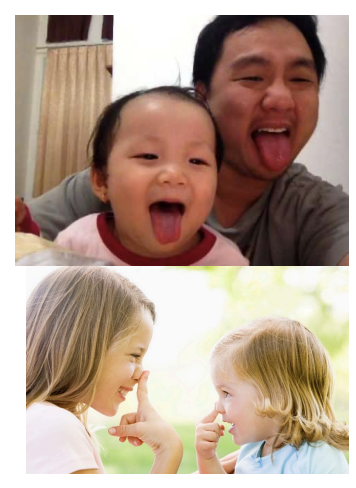
Stage 2: role playing
Direct imitation is followed by intensive roleplaying
Child takes on the role of the other during play
“playing doctor”, “playing house”, “playing restaurant” etc.
Children role play what they witness
Toddlerhood
We often think of these games as just being “play,” but for Mead this kind of play is essential for the development of socially mature adults practice the skills that they need for the future, ex. when they need to go the doctor alone
they control the script, don’t have a reaction when you say you have a ‘cough’
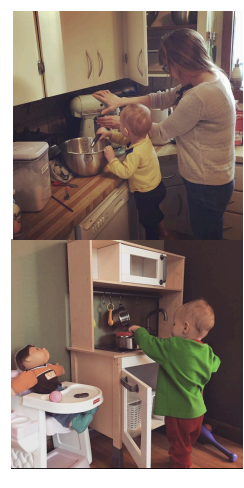
Stage 3: simultaneous appreciation of multiple roles
Children begin to play games that necessitate taking on the perspective of multiple roles simultaneously
Team sports, board games, etc.
During this stage, children start developing what is ultimately an essential building block of social interaction: the ability to predict what an interaction partner’s response will be, and the ability to assess the other’s apprehension of one’s own behaviour what does my behaviour look like for them, facilitating that mature expectation
Elementary-aged children
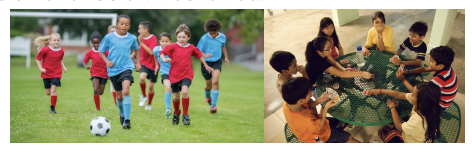
Stage 3 con’t
Seeing one’s own behaviour from the perspective of the other - based on how their behaviour, how they bet, their facial expressions
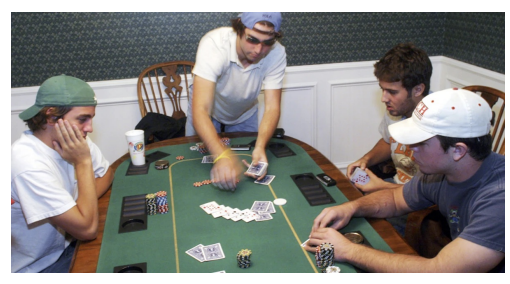
Stage 4: internalization of the “generalized other”
what do i look like from their perspective? - no longer need to think consciously
At this stage, individuals become socially mature
Late adolescence, early adulthood
No longer need to think consciously about what one’s behaviour looks like to others, this assessment becomes completely incorporated into the self - going unconsciously, no need to think what you need to behave. “i am at a football game how should i behave?”
The generalized other: “The organized community or social group which gives to the individual his unity of self may be called ‘the generalized other.’ The attitude of the generalized other is the attitude of the whole community.” → internalization of social norms
 i know it looks bad - have a explanation but understand that the other person doesn’t know that
i know it looks bad - have a explanation but understand that the other person doesn’t know that
however, toddlers thinks that they know what is going on your head
Erving Goffman The Presentation of Self in Everyday Life
Social interaction amounts to a relationship between individuals who take on roles in particular settings
Instructor and student
Doctor and patient
Server and customer
Role
For Goffman, a “role” is analogous to the roles that actors take on in plays or films: they are prescribed ways of interacting that are conditioned by a particular social time and space
Teacher
Student
Parent
Citizen
Bus driver
Every role has particular expectations and acceptable behaviours built into it
Without social roles, social interaction would be much more difficult

Social interaction, for Goffman, occurs as much between “roles” as it does between the individuals who inhabit those roles
The role has two components: appearance and manner nurse wears scrubs, teacher wear professional clothing. appearances inhabit the role successful
style of expression

Setting
“…furniture, décor, physical layout, and other background items which supply the scenery and stage props for the spate of human action played out before, within, or upon it.”

→ Interaction is conditioned by the character of the space in which it takes place - inhabiting this role, uni degrees, books serves inhabiting the role of a professor
doesn’t serve the role if the environment is populated by ‘hello kitty’

Frontstage and backstage
Goffman notes that roles often have both a “frontstage” and a “backstage” settings that are necessary for the successful presentation for social roles
Back stage activities involve the coordination of roles to present a certain kind of interactive experience to an “audience” (individuals who are not part of the construction and reproduction of the setting) this image below, going out for dinner and seated at their table. ‘frontstage’ are going to be the individuals who are going to be eating their meals (the diners), ‘backstage’ is the kitchen. waiter acts different between ‘front’ and back’ stages. waiter gives more relaxing feeling for the diners whereas in the kitchen they would yell and demand what the meals being requested
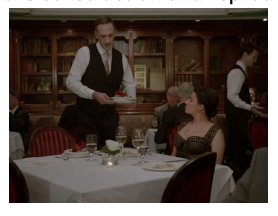
 video - children disrupt bbc news
video - children disrupt bbc news
this image above, is where the ‘backstage’ is “spilling out” to the “frontstage”
man is wearing suit and tie, speaking in a appropriate manner however as the backstage spills out we are now aware that he is a father
Frontstaged
 ms. engman is a professor at uni, backstage life for her is being a mom
ms. engman is a professor at uni, backstage life for her is being a mom

Backstage
The backstage is also a “setting,” and people also inhabit roles while backstage
In the backstage, actors coordinate to produce the situation of the frontstage
 backstage is essential for activities to be successful in frontstage
backstage is essential for activities to be successful in frontstage
doctors are not going to say “idk” to you so there has to be backstage activities (like talking to colleagues) happening before confronting you
Frontstage, backstage & social media
Increasingly, the “frontstage” of social activity is digital
In social media use, the distance between the activity of the frontstage and the activity of the backstage is amplified presenting a picture that might be going on in the background
ex. social media - filming your children for views,
 Jjjohjmn Lockee
Jjjohjmn Lockee